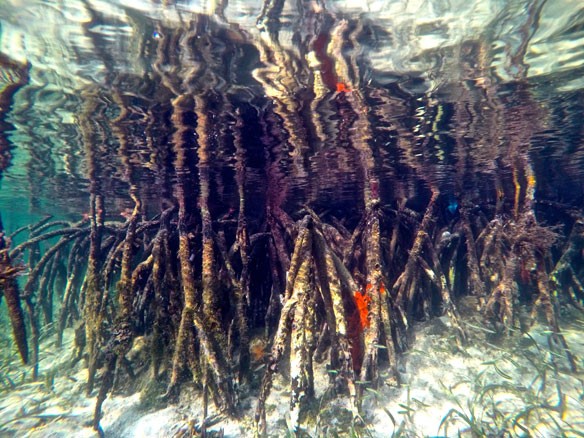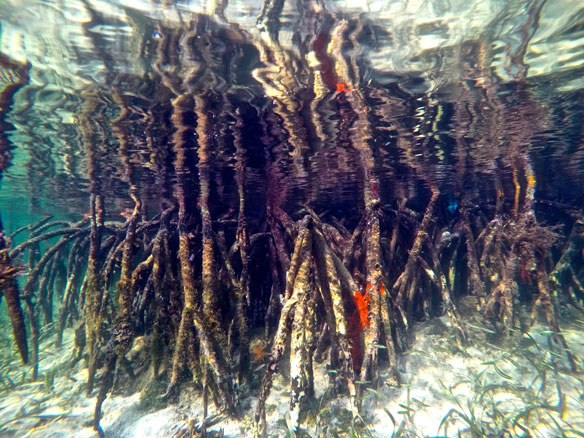
Mangrove. Photograph: © SAF — Coastal Care
Excerpts;
After three years of implementation of the Mangroves and Markets Project (MAM), shrimp farmers have become more aware of organic production techniques and the need to preserve mangrove forests in their areas…
Read Full Article, Viêt Nam News
Preserving Mangroves Provides Protection and Food Security, IPS News (11-16-2015)
Destruction of Mangroves Costs up to US$42 billion in Economic Damages Annually – UNEP Report (10-14-2014)
The world is losing its mangroves at a faster rate than global deforestation, the United Nations revealed, in a new report “Importance of Mangroves: A Call to Action,” adding that the destruction of the coastal habitats was costing billions in economic damages and impacting millions of lives…
The World Must Invest In Mangroves, The Ecologist (04-11-2014)
Mangrove Forests as Incredible Carbon Stores, The Nature Conservancy
Stop Mangrove Destruction In Indonesia To Slow Climate Change, The Ecologist (08-13-2015)
The loss of Indonesia’s coastal mangrove forests for shrimp farming is a huge source of carbon emissions, writes Prodita Sabarini. But equally, a policy flip to preserve and recreate mangroves offers a major climate win…
The Coming Green Wave: Ocean Farming to Fight Climate Change, The Atlantic (11-23-2011)
Ocean farming is not a modern innovation. Unfortunately, modeled on land-based factory livestock farms, aquaculture operations are infamous for their low-quality, tasteless fish pumped full of antibiotics and polluting local waterways. But a small group of ocean farmers and scientists decided to chart a different course. Rather than relying on mono-aquaculture operations, these new ocean farms are pioneering muti-tropic and sea-vegetable aquaculture, whereby ocean farmers grow abundant, high-quality seafood while improving, rather than damaging, the environment…
The Next Food Revolution: Fish Farming? CSM / Yahoo News (10-25-2015)
Farmed Fish Consumption At Record High, UN Report Reveals; Guardian UK (05-19-2014)
Humans have never eaten so much fish and other seafood, but nearly half of it is no longer caught wild but is grown in farms, says the United Nations. The rapid growth in the number of people living near coasts and fish farming’s ability to keep up with population growth has seen per capita fish consumption soar from 10kg per person in the 1960s to more than 19kg in 2012…
Seaweed Can Help Feed the World. But will We Eat It? The Tico Times (11-03-2015)









